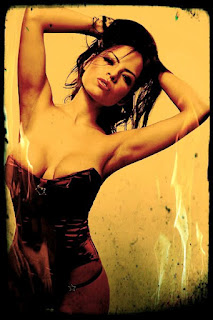 No sooner did I post my last update, an opinion piece regarding digital shtick and the popularity of adding it to our photos, than I came across this article from the UK's Mail Online.
No sooner did I post my last update, an opinion piece regarding digital shtick and the popularity of adding it to our photos, than I came across this article from the UK's Mail Online.It seems a recent poll of 1,671 Facebook users revealed that photo images with added digital shtick, i.e., shtick generated by digital photo apps, has knocked baby pictures off the throne of "Most Annoying Photos on Facebook."
In the poll, Facebook users said the main reason they hated apps such as Instagram was the "unnecessary photographic effects" added to the images. Who knew average viewers would have the audacity to tell us -- us passionate, knowledgeable, and artsy photographers -- what constitutes a good artistic photo? The next thing they'll be doing is telling us how they think we should expose and compose our images or what kind of stuff we should be pointing our cameras at!
How did the crowd get out of control? Don't these know-nothings know that, when it comes to photography, only us real photographers know what's cool, hip, and trendy? We know what works and what doesn't work (photography-wise) and, based on the never-ending stream of Instagram-enhanced photos I see posted on Twitter and Facebook, many of them coming from some pretty darn good photographers, I have to conclude that, when it comes to photographs, viewers don't know what they're talking about and only we do!
A quarter of the Facebook users polled said they found the apps "gimmicky" and three quarters of them said they had taken action to prevent annoying, app-enhanced, photographs from appearing in their news feeds. How dare they? What do they know? Screw them if they don't appreciate art, even if it's art mostly produced by a cell phone's or tablet's programmed algorithms rather than the creative geniuses wielding the devices. If serious photographers say those photos are cool and artsy -- and that's what they're saying given the popularity of making and posting so many photos with digital shtick added -- they're cool and artsy. Period. Like them or not. End of discussion.
The very cool, hip, and artsy pretty girl image at the top is one I snapped of a model named Yurizan some time back. (Click to enlarge.) It's made ever so cooler, hipper, and trendier by the artful addition of carefully selected and applied digital shtick courtesy of my Acer Android tablet and an app called Pixlr-o-matic. I thought the flames were a nice touch. They underscore the obvious-- You know, that Yurizan is a hot, sexy chick. D'uh, right?









